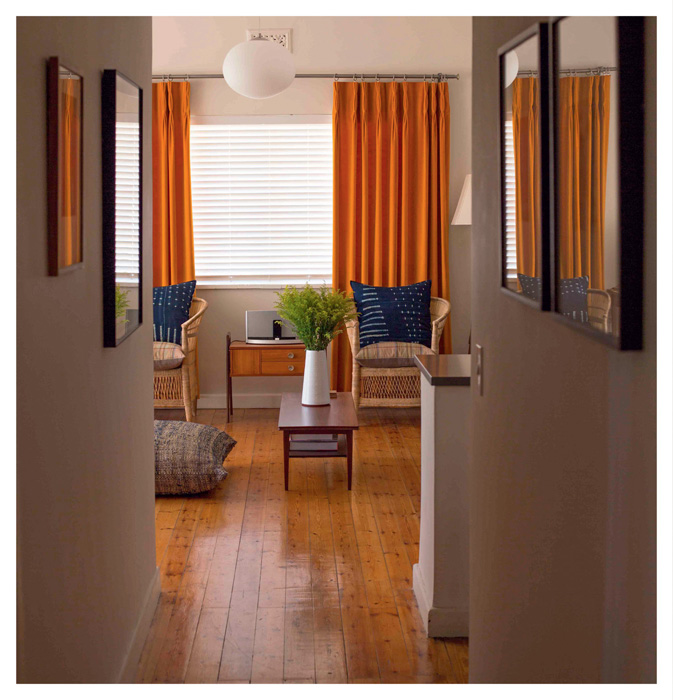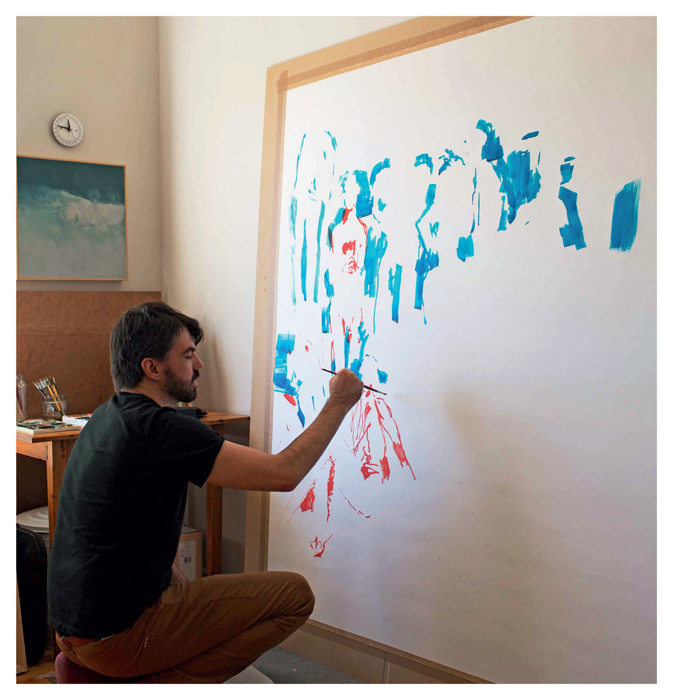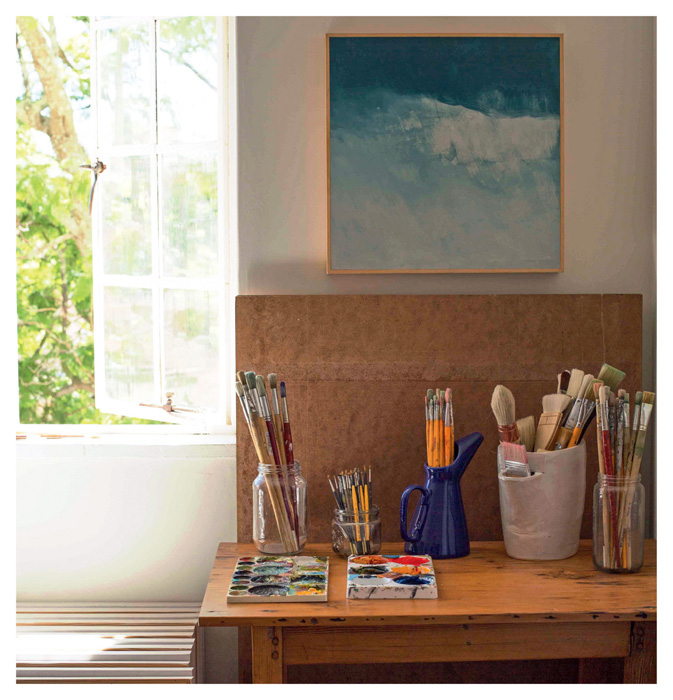MICHAEL TAYLOR
Michael Taylor is a painter who isn’t painting for the revolution. His work is characterised by vivid colour and a graphic, illustrative style. He says it is ‘a dialogue between personal and cultural knowledge; themes and narratives that inform our everyday thinking. It deals with the burden of reading things the right way, and my images insinuate hidden agendas and peculiar truths about modern people and stereotypes.’
His art is narrative, digital and not unlike the kind of video that goes viral overnight. You get bold, brash and unsettling one-act dramas on canvas with attention-grabbing titles (Save the Drama for Your Mama; Till the End) that remind you of those punchy irresistible TV series with names like Orange is the New Black or Breaking Bad. It’s art that’s the equivalent of flash fiction. Figures lurch and wink and masquerade in group portraits such as Was Once Funny or the artworks shown at his exhibition ‘The Plot Thickens’. Falling parachutes populate a lurid maroon seascape in You’re Such a Girl. Everything has tilted away from the perpendicular, throwing the viewer off-balance. The colour palette is garish, acid, incongruous. You can’t look away. He hasn’t been at it for long, but his growing confidence comes through in gouache or acrylic, scary or troubling, but also achingly beautiful. Minimal, too. He knows how to make each brush stroke count.
Taylor lives with his boyfriend in Oranjezicht in an apartment with an enclosed balcony on the first floor of a 1930s block. This is a young person’s home but it’s put together with a confident eye. ‘He has a great sense of personal elegance about him,’ says João Ferreira, ‘which is reflected in his interiors.’ His studio is here, too, in a back bedroom. It’s tiny, yet here he paints enormous pictures, and gets away with it because his drawing ability is so good.
On working at home ‘I spend a lot of time here by myself, with my pictures. My standard day is generally get up, have breakfast, read the blogs, email, fix things up a bit, get my mind into going into the studio, and then go there. Having my studio here has its advantages and disadvantages. Making working from home work for me is about learning how to navigate the apartment in order to get to a stage somewhere in the day where I can say, now, I’m ready to go into the studio. And that’s at about four o’clock. Having the studio here doesn’t rule my day. I have to reach a point where I am so anxious to get on with it that it just organically takes place. It’s definitely to my advantage because I get to spend quality time with the work. Although I’m here a lot, I do go out.’
On being sociable ‘It’s not as if I spend my entire life alone at home. My apartment is a very social space. A group of friends call it the tuck shop because it’s a convenient place for everyone to catch up in. I’m more sociable than you think I am. Actually, more and more, my work is about tribes, people trying to figure each other out. I group people together and you’d think they were all like-minded, or that they all come from the same slice of the pie.’
On colour ‘My apartment isn’t as colourful and extreme as my work, but it shows my love-hate relationship with certain colours, like orange. I love it, but I also find it quite off-putting. Sometimes I feel happy that it’s there. Often it’s there just to confront other colours or to create a particular dialogue – like when orange complements blue. That dialogue is important. Because much of the content of my work is imaginary, with an almost poetic language, colour has an important role. And the more extreme or playful or graphic, or illustrative even, the colours become, the more they’re going to have a say. The stronger they are the more they have to communicate. I associate blue with masculinity – and that’s stereotyping it. Because my work is so much about playing with stereotypes and narratives, using something like blue is a nice entry point into talking about, say, masculinity. Blue is quite naughty. That makes it menacing; look at my indigo sofa. Lots of people say blue is calm, and there are associations with the ocean, the sky and with comfort. But because we’re constantly surrounded by blue, it creates an environment in which things can take place. Blue is like the home of the other colours; it’s easy to welcome them if there’s blue. So here I have a midnight-blue stripe (the sofa) and orange verticals (the curtains). I like that they look like heavy brush strokes. They’re deliberately like those bands of colours you see in my work and which I put there because they create some sort of tension.’
Colour is often the subject of Taylor’s work as well as his medium, just as it is in his home.






